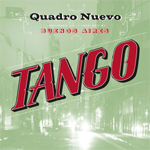 |
|
|
|
 |
Fratricide. To check out murder, the Hex hopped atop the Pavane to demonstrate physical width losses and hoped-for sonic losses against the bigger better newcomer. A Zu Event XLR leash connected either to the D1 as volume control. The KingRex USB cable shuttled between the Pavane Amanero Combo384 port and the Hex hiFace version. There recently had been much public kvetching in Tidal news—French Qobuz had no-loss streaming well before the Norwegians but never attracted similar resentments—about the audibility of 1411 vs. 320kbps streaming; and why anyone sane might spend an extra $10/month for a subscription on the RedBook rez. Earlier Pono hate in various tech blogs had maligned the audibility of beyond-RedBook fare. They called hi-rez a hoax aimed at overpaid gullibles. One wonders whether said commentators used gear of sufficient magnification power to conclude this. Our Dutchie certainly made more of a 24/96 Juan Carmona Alchemya file folder than its CD equivalent. That's not to say that some 'hi-rez' files of dubious provenance aren't upsampled CD tracks; that well-mastered 16/44.1 can't trump ho-hum 24/88.2; and that musical enjoyment is synonymous with sonic improvements. If you don't care for the tunes, you won't care if they cast more audible space and three-dimensionality. But applying such qualifiers to malign the entire hi-rez movement is babycide and blood in the bath water. After all, hi-rez is still in its relative infancy on both consumer awareness and raw numbers of available titles. |
|
|
 |
The Pavane's new 6th black button is actually the IR eye, the red LED above it an error indicator which lights when there's no signal lock.
|
The Pavane extracted more of the hi-rez extras encoded in Alchemya than did the Hex. As such, it widened the gap between these decks which was narrower on lesser fare. That turns back on our earlier mantra. If it ain't there in the first place, you can't retrieve it after the fact. Should your library consist of mostly junk food—music you love which wasn't recorded well—a gold digger like the Pavane is a red-carpet celebrity with barely-there threads. It's not quite the emperor's new clothes but not far off. Questionable. Once your library contains stuff from labels like ECM, Naïve, Harmonia Mundi or Channel Classics; and good but more obscure ones like GLM, M.A., Al Sur & Co.; you benefit from digging deeper. Now there's substance to unearth. It's plain common sense. That commentators from outside audiophilia are more apt to use Pop for test sessions is, too. That's what their readers know and relate to. Given how most of it is mastered for car, radio and mobile use, just don't hope for Michelin stars at MacDonald.
|
 |
Juan Carmona septet with dancer Jesus Carmona.
|
| What did these hi-rez extras sound like? First up, recorded space, be it purely acoustic or doctored up with electronic reverb, was more obvious. One doesn't hear space per se. Space is the emptiness that envelops the sounds. That emptiness is silent. But unless you record outdoors, space is defined by reflective boundaries. It's these time-delayed reflections which create the map coordinates of the so-called soundstage; and better define the relative placement of performers on it and when and how they might move. These markers are often very low in level. They are easily masked and overlaid by louder actions. Hearing them requires a low system noise floor, freedom from mechanical and electrical distortions and more. It's not unlike when a tripod, remote trigger and specialized constant lighting add up to a perfectly sharp picture without embedded micro blur.
|
|
|
|
|
A more advanced micro domain is that of tone modulations. It's how players and singers manipulate their core timbre. Changes in finger, lip or bow pressure, air speed, embouchure, head/throat/belly voice and more are the means whereby musicians put timbre in constant flux. The distribution of overtones changes. The sax still sounds like the same sax. But its character morphs from brash to husky, sharp to mellow, biting to breathy,
reedy to guttural. These distinctions are fluid and often most subtle. But it's the very stuff humans not synths are made of. This is how music becomes human. It's when the element of tone modulations or tone textures gets more explicit, more nuanced. It allows more of a player's personality to step out. On "Karma", the flamenco guitars of Juan and Josemi alternate or parallel each other. Separating them by location is primitive. It gets more advanced on timbre. Gaining access to their different personalities and moods is more advanced still. It's this access which has one enter the inner game of hifi. One no longer stands by as a watcher. One is immersed. One is inside. Now soundstaging disappears as the audiophile beginner's hoax it is. For it to matter requires being separated by distance; being outside. There's a higher purpose for truly fine hifi. A busy mind can certainly resist the immersive pull to remain the aloof critic. But components like the Pavane lower this barrier of entry. Their time coherence doesn't confuse our brains. Their tremendous micro detail has us notice more elements of recorded space and the interconnectivity between players; more performer inflections and how those vary emotional meaning; and more of the constant energetic pull that ebbs and flows between tension and release.
|
 |
Good luck selling any of this to the measurement brigade. That did cross my mind. With the proper test rig, the Pavane's dynamic range and S/NR ought to be readily measurable. But it won't tell you what it means. Not really. Take a thinking person who fantasizes about what more, more, still more and even more resolution would actually sound like. They should fear that excessive detail will eventually create sensory overload and a very bad case of listener fatigue. Indeed. But such thinking still confuses more detail with pixel count. And that only applies to flat two-dimensional screens or printed images. It's not applicable to the 3D stereo illusion. The 'hi-rez extras' from above aren't about dialling up audio focus and contrast to hyper-realist degrees. We aren't aiming at making out the thread count and weave on the drummer's shirt. It's about far softer data - contextual, energetic, temporal information. If it weren't, listening wouldn't get easier. It'd contract into something far more effortful. We'd be back at fatigue, overload and the antithesis of natural. That's so not what I heard with the Pavane. Gear like this makes it easier to have a splendid and deep listening session. That's about stuff more profound than where the second fiddler of the third chair of the violas sat (though it'll do that too if recorded with such artificial mega multi-tracked separation).
|
 |
|
 |
I'll conclude with something basic but true. It takes proper music (your momentary mood determines what that is) and a properly prepared frame of mind to end up with such encounters. You won't have one by merely firing up an inanimate metal box. Not even this one. If that's all you did on your first Metrum Pavane audition, perhaps because some moonstruck reviewer seemed to promise automatic revelations, grave disappointment is bound to follow. This deck is for more advanced listeners. They know the ropes of hifi's inner game. They create the right setting for magic to happen. The right gear is certainly part of it. But there's more. Or as Osho would remind me, true meditation isn't something we can do. It's something that happens. Of its own accord. Like an accident. What we can and absolutely must do is make ourselves more accident prone. Here Metrum's Pavane is a most excellent helper companion. Just don't tell your audiophile insurance agent. That sour chap will cancel your policy and membership in the audio mainstream to immediate effect. So ask yourself this: Do you want to be in; or out? |
|
|
|
|
 |
|
|
|
|

|
|